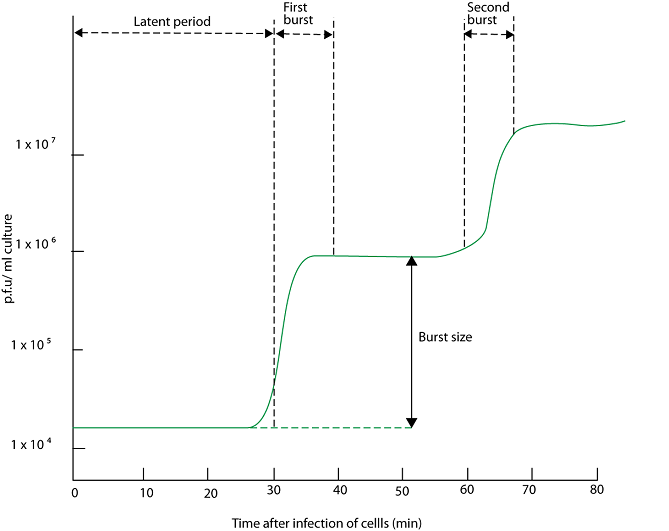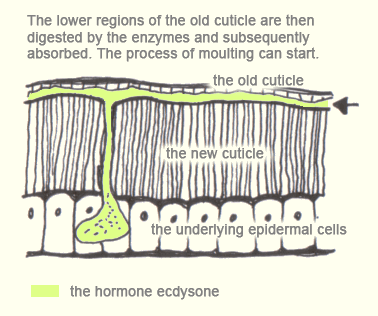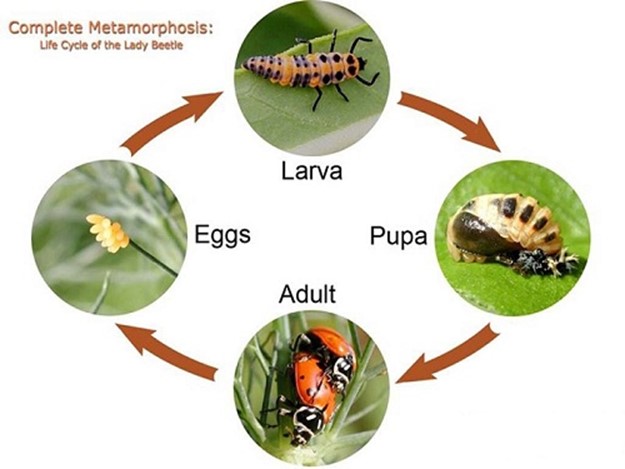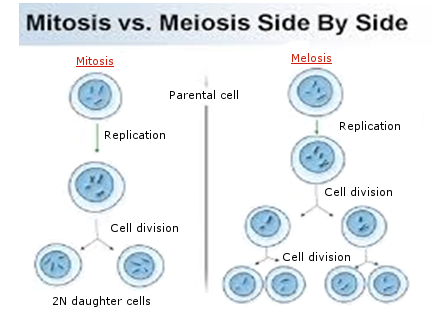Growth is a fundamental characteristic of living organisms.
OR
Growth – is defined as an irreversible increase in dry mass of living material.
OR
Growth is a permanent or irreversible increase in dry mass of protoplasm due to synthesis of proteins.
Dry mass is mass without water.
Why dry mass?
By specfifying dry mass we can ignore the short term fluctuation in the water content of the cells for instance when the plant cells take in water by osmosis. The reverse process can take place when cell lose water.
Other definitions of growth.
- Growth as increase in size. This definition is inadequate some organisms e.g. plants can increase in size as they take in water by osmosis, but this process may be reversible when they lose water.
-
Growth as increase in cells number
This definition is inadequate when the zygote divides repeatedly to form a ball of cells, they early embryo, there is an increase in cells number without increase in size of daughter cells.
In some cases you can increase in size without increase in cells number e.g.: in the region of elongation behind the root and shoot tips.
- Growth as increase in number of individuals (population of the single- celled organisms e.g. Micro – organisms such as bacteria)
edu.uptymez.com
Development: The process of development is so closely linked with growth that the phase “growth and development” is common used to the process which are normally thought of as growth. Development refers to an increase in complexity due to differentiation of tissues and organs (improvement in the functions of the body)
Growth can be regarded as change in the quantity as development is the change in quality.
Factors that affect growth
There are both external and internal factors that control growth.
External factors Internal factors
- Food/ nutrients 1.Genes
- Diseases 2.Hormones
- Temperature 3.Enzymes
- Oxygen
- Light
- Space
- Toxins
- Soil
- Carbon dioxide(CO2)
edu.uptymez.com
Patterns of growth
-
Positive and negative growth
Positive growth – it occurs when synthesis of materials (anabolism) increase break down of materials (catabolism)
Example of positive growth in plants, the production of seedling which involve increase in cells number, cells size, fresh mass, length, volume and complexity of form as the seedling starts to photosynthesize and make up its own food.
edu.uptymez.com
Negative growth – occurs, when catabolism exceeds anabolism. Example increase in dry mass of germinating seeds
2. Allometric and isometric growth
Allometric growth occurs when organs grow at different rate. This produces a change in size of the organism which is accompanied by a change in shape of organism.
The pattern of growth is characteristic of animals. In almost all animals last organs to develop and differentiate are the reproductive organs. In man, the heart, brain and gonads all have different growth rate.
Isometric growth this occurs when organs grow at the same rate. In this situation, change in size of the organism is not accompanied by a change in shape, or external form of an organism.
This type of growth pattern is seen in fish and certain insects such as locusts
3. Limited and unlimited growth
Limited growth(definite/ determinate) – is the type of growth which shows a seization in growth when an organism matures and reaches a reproductive age. For example growth in annual plants.

The graph of Annual plants
Unlimited growth is a type of growth which occurs throughout the life of an organism. This growth occurs mostly in perennial plants. It is characterized by a series of sigmoid curves.

The graph of perennial plants
Measuring growth.
Growth can be measured using different parameters e.g. Length/ height, mass (dry/ fresh), weight, volume, area.
Growth curves
These are graphs obtained when data obtained from different parameters of measuring growth are plotted against time.
The curves show the overall growth pattern and extent of growth. It has found that growth pattern in many organism tend to be the same regardless the parameter used in measuring growth. In many cases if there is increase in measurable parameter is plotted against time a S- shaped growth curve is obtained. The shape of these curves is described as sigmoid, meaning S- shaped. The term sigmoid is derived from the Greek word sigma meaning letter S. A sigmoid curve is divided into four (4) parts or phases.

The sigmoid growth curve.
-
Lag phase
This is the initial phase during which little growth occurs (slightly decrease in growth).In flowering plants this phase show a slight decrease in growth. This is the result of loss of dry mass during seed germination.
In microorganism a few may die at the time of innoculation to the culture medium therefore showing decrease in number. Due to this phase the population of micro organism can grow rather slowly because they may have been in dormant state and time is required before their metabolism begin to work efficiently. Other reason for little growth for micro organism may be adjustment to the new diet.
-
The log phase or exponential phase.
This refers to the grand period of growth during which growth proceeds exponentially. During this phase the rate of growth is at maximum. The rate of growth is proportional to the amount material or number of cells or organism already present. In microscopic organisms this phase occurs when there is no limiting growth. Nutrients and oxygen are in plentiful supply umple space is available. In flowering plants is the period when green follicles increase in amount.
-
Stationary phase
This marks the period where the overall growth has ceased .The parameters under consideration remain constant In micro organisms it is the phase when the number in the culture stabilize besides they neither decrease nor increase i.e. the number of individual dying are approximately equal to the number of new individual formed.
-
Decelerating phase (decline phase)
This is the period in which growth become limited as the result of the effect of some internal and external factors, or the interaction of both. In many mammals including humans, this marks the period of negative growth. It is a period of senescence associated with increasing age.
In micro organisms which are grown in a confined environment, this is the period where the carrying capacity of the environment declines and it is unable to support the high density of organisms. Nutrients are decreasing and excretory products are increased in the medium. The rate of growth keeps on decreasing until all organisms die as a result of starvation, shortage of oxygen or presence of waste products in toxic amount.
Diagram showing a sigmoid curve
-
Growth in arthropods
Growth in arthropods occurs in a series of stages (instars). These series of stage show sudden changes in weight or length. This pattern of growth is known as intermittent growth, or discontinuous growth. Each growth stage is called an instar.
edu.uptymez.com
Reasons for intermittent growth.
All arthropods have an exoskeleton made up of hard chitinous cuticle, which prevents overall growth of the whole body. The exoskeleton is shade periodically in the process called moulting or ecdysis to allow growth.
The new cuticle underneath in soft enough to allow growth to take place. The cuticle later hardens making growth impossible until cuticle is shed again. It is for this reason; growth occurs in spurts interrupted by series of moults.
Diagram showing growth in arthropods

Hormonal control of ecdysis or moulting in insects
Moulting or ecdysis is controlled by a moulting hormone (mH) or ecdysone which is released in response to a specific stimulus. The moulting hormone is secreted by the thoracic gland. The production of ecdysone by thoracic gland is stimulated by certain hormone produced by neurosecretory cells in the brain.
Moulting hormone is a steroid. It brings about shedding of the cuticle and growth of an insect. Growth of insects is accompanied by series of mouths. Moulting hormone cause the secretion of moulting fluid immediately beneath the cuticle.
This dissolves the soft inner part, mean while the new cuticle soft first in secreted by epidermis.

Growth in insects.
The process of growth in insects involves changes in body for involving number of stages in their life cycle i.e. from the young to the adult form. The changes of forms from the young to the adults are referred to as metamorphosis.
Metamorphosis is found also in other groups of organisms such as amphibians, molluses, crustaceans, termatodes, cestodes and echinoderms to mention a few. In these organisms the term metamorphosis applies to those rapid changes which occur during the transition from larva to adult form.
Metamorphosis in insects.
These are two (2) types of metamorphosis
-
Complete metamorphosis
In this type, the life cycle of an insect passes through a series of four (4) stages i.e. Egg, larva, pupa and adult form.
edu.uptymez.com
Insects that exhibit this type of metamorphosis are referred to as holometabolous insects. E.g. Butterflies, houseflies, Moths and bettles.

2.Incomplete metamorphosis (hemimetabolous)
In this type of metamorphosis, an insect pass through series of three (3) stages where the young resembles the adult. The insect passes into three (3) life stages i.e. the egg, nymph and adult.
Insects which exhibit this type of metamorphosis are known as hemimetabolous insects e.g. Cockroaches. Grasshoppers and mosquitoes.

Hormonal control of metamorphosis in insects
In insects, a successive moults lead to an insect to acquire either suddenly, or gradually, the features, characteristic of adults .The process of metamorphosis in controlled by two hormones .
- The moulting hormone.
- Juvenile hormone.
edu.uptymez.com
Metamorphosis is suppressed by the, juvenile hormone secreted by the gland called corpus allatum in the brain.
In the presence of juvenile hormone in the blood, epidermal cells under the influence of moulting hormone produce cuticle characteristic of juvenile stage. These are the nymph or larva as the case may be in order words, juvenile hormones inhibit metamorphosis and especially causes, the retention of larval characters in the suppress gene responsible for producing adult structure.
At metamorphosis the corpus allatum stop secreting its juvenile hormone and the moulting hormone in the absence of the juvenile hormone cause of epidermal cells to lay down the adult type of cuticle.
Summary
- For shedding of the cuticle the moulting hormone is required.
- Moulting hormone accompanied by juvenile hormone Cause epidermal cells to produce a larval cuticle.
- Moulting hormone alone without the juvenile hormone cause it to produce adult cuticle.
edu.uptymez.com

The process of growth
The growth of a multicellular organism can be divided into three (3) phases.
- Cells division – an increase in cell number as a result of mitotic division and cell division.
- Cell expansion– is the irreversible increase in the cell size as a result of the uptake of water in the synthesis of living materials.
-
Cell differentiation – the specialization of cells.
a) Cell Division
Cells are formed from pre – existing cells by the process of cell division. Cell division strictly is the process of division of the cell cytoplasm into two (2) daughter cells. The two (2) daughter cells share the same structures (organelles) which are duplicated before the cytoplasm start dividing.
The two (2) major events in the information of new cells include.
edu.uptymez.com
- Division of the nucleus ( nuclear division )
-
Separation or nglish-swahili/distribution” target=”_blank”>distribution of the cytoplasm between the daughter cells. The division of the nucleus is known as karyokinesis and the separation of the cytoplasm is known as cytokinesis.
Nuclear division
There are (2) two types of nuclear division
1. Mitosis – is the process by which the cell nucleus divides to produce the two daughter nuclei containing identical sets of chromosomes to the parent cells.
OR
Mitosis is the type of nuclear division that maintains a diploid number of chromosomes in the daughter cells.
Mitosis occurs in somatic (body) cells. It leads to the formation of body cells.
2. Meiosis – is the process by which nucleus divided to produce four (4) daughter nuclei each containing half number of chromosome of the original nucleus.
Meiosis is alternatively known as reduction division since it reduces the number of chromosomes in the cells from the diploid number (2n) to haploid number (n)
Meiosis occurs in gonads. It leads to the formation of sex cells.
NB: nucleus division principally involves the nglish-swahili/distribution” target=”_blank”>distribution of chromosomes in the daughter cells. Chromosomes are the most significant structures in the cells during cells division since they are responsible for the transmission of the hereditary information from generation to generation.

edu.uptymez.com